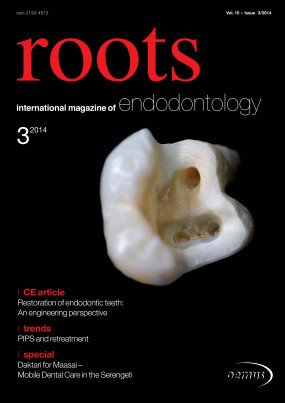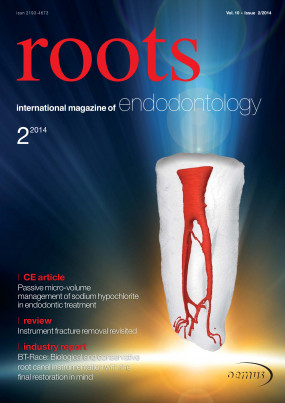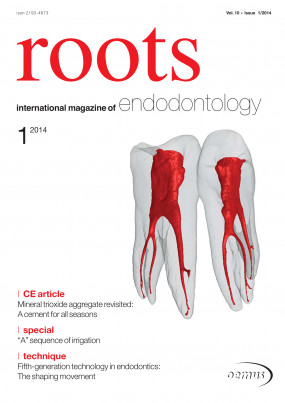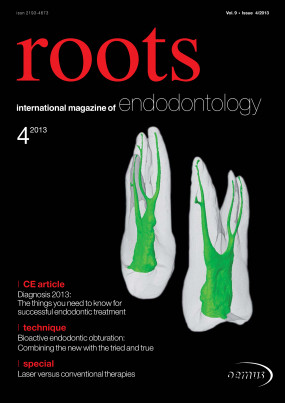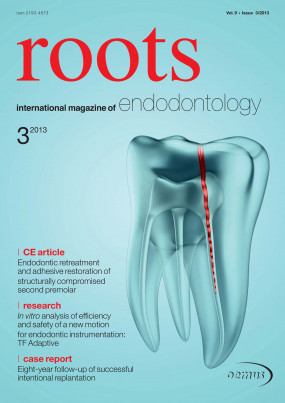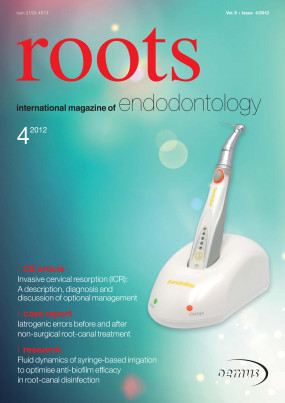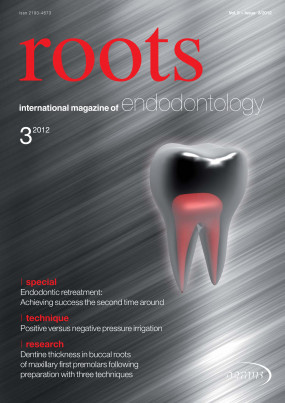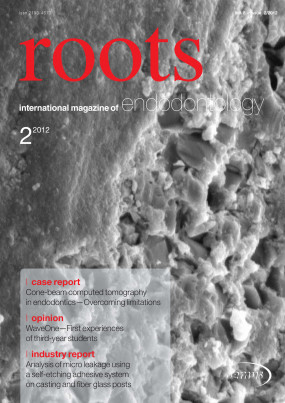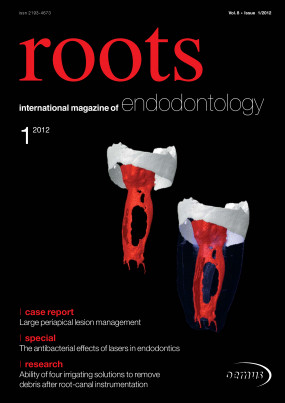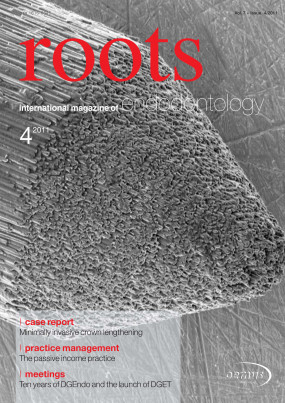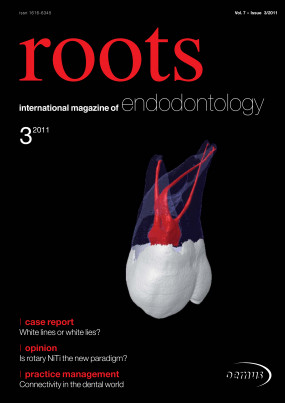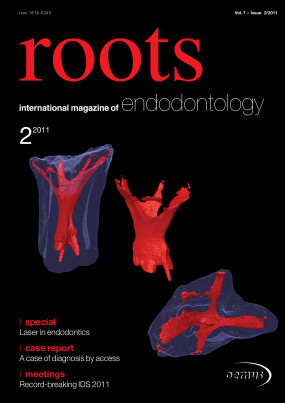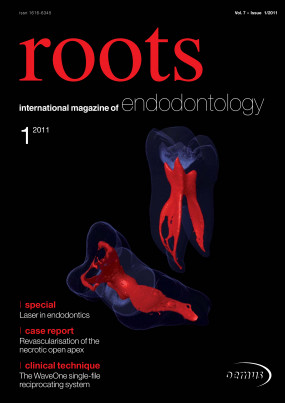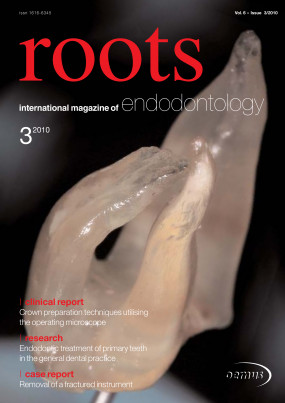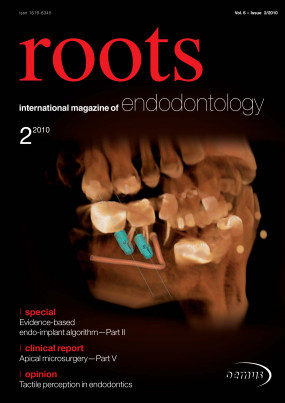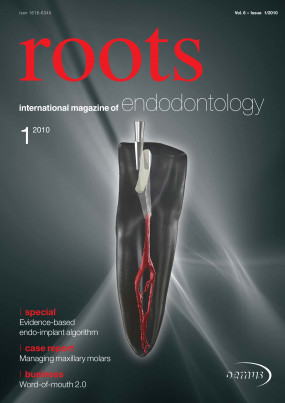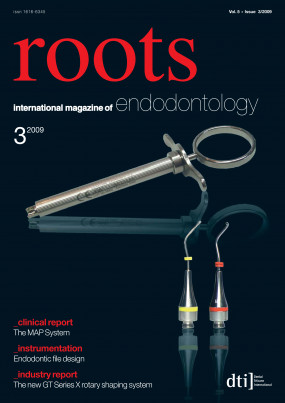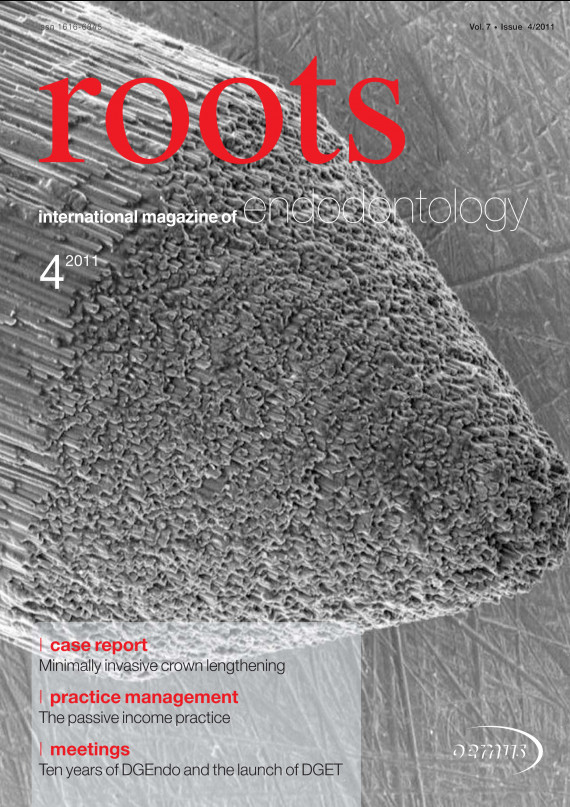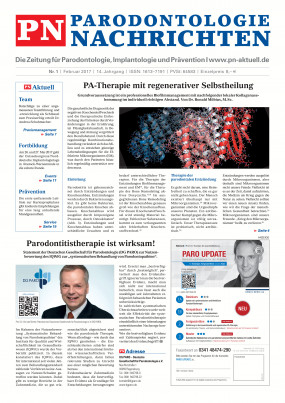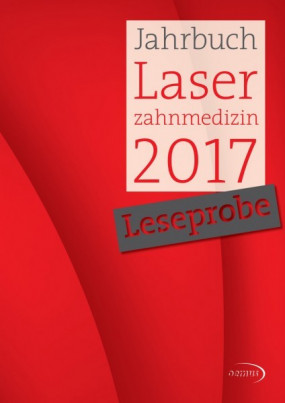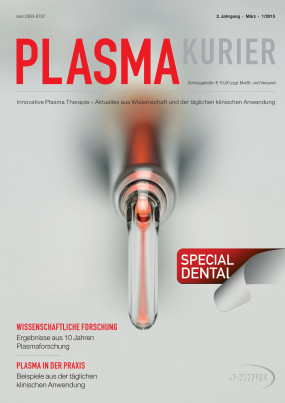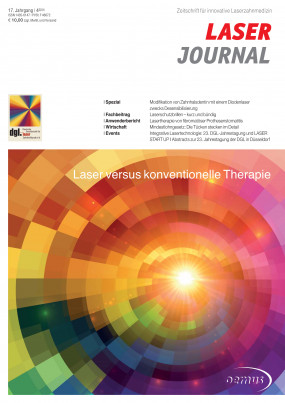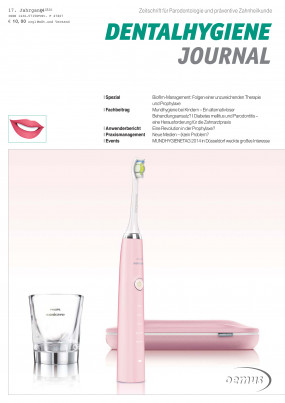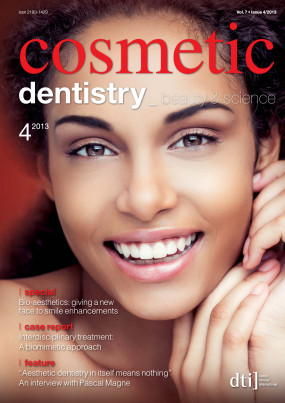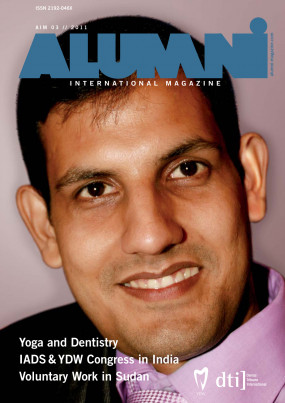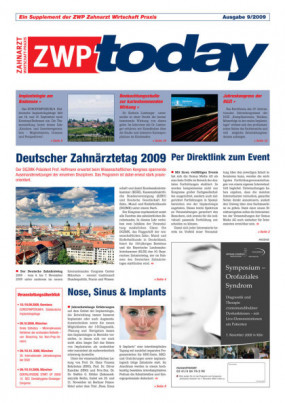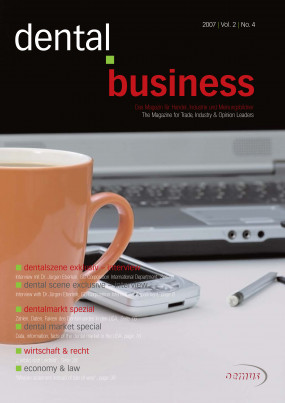Inhaltsverzeichnis
3
The single most important development that was a giant leap for endodontics is micro-computed tomography, which gives us a 3-D view. Without this technology, the basis for many endodontic procedures was just empirical, like enlarging the root canal three sizes beyond the first file that binds during hand instrumentation, or arbitrarily deciding the final apical size with tapered rotary use...
6
Minimally invasive crown lengthening as an alternative to implant treatment
Prof Marcel Wainwright, Germany
Crown fractures frequently force the treatment provider to make a clear-cut treatment choice between tooth preservation and dental implant treatment. Speakers at implantological congresses tend to present impressive implant/prosthodontic solutions for anterior fracture cases, to the point where the audience could be tempted to believe that this was the only appropriate treatment alternative. The following case report documents a tooth preservation option that is simple to perform, minimally invasive and successful...
10
The vital amputation (VA) of deciduous teeth with the goal of maintaining their functionality for a limited period is a widely accepted measure. Vital amputation of permanents, however, is only approved for limited indications. While therapeutic agents such as calcium hydroxide (Ca(OH)2) and mineral trioxide aggregate (MTA) are recommended for VAs, formaldehyde (CH2O) containing agents are a controversial subject...
18
Exit planning has traditionally been a fairly simple task for dentists. The choices a dentist faced were either winding down the number of days worked, thereby gradually easing into retirement, or working until three to six months before wanting to stop, and then advertising the practice for sale. After negotiations with the buyer, dentists would sell and walk away—much like a house sale. Sometimes there would be a good handover of patients and staff, and sometimes this process would be less than ideal...
20
After years of teaching endodontic programmes around the country, I can say with strong conviction that the process of critical thinking has not been applied to the mechanics of endodontics. Not for one moment am I critical of a programme’s emphasis on diagnosis, histology and pathology. The incorporation of microscopes has vastly improved dentists’ abilities to seek out fine structure that can be the difference between success and failure...
24
The September issue of Oral Health included an article by Dr Ellis Neiburger entitled Rubber dam hazards. The contextual inaccuracy, skewed perspective and postulatory bias of the author was disingenuous at best and horrifying at its worst. I’m not certain how it managed to secret itself into our beloved centenarian journal, but it did. Before I comment on the text, I’d like to share a scientific article with you published by Smith and Pell in the British Medical Jour-nal in 2003 (entitled Parachute use to prevent death and major trauma related to gravitational challenge: systematic review of randomised controlled trials) to give my concern about this article’s publication an element of gravitas. The abstract reads: ...
26
28
“The integrated systems provide enormous support for the user during root-canal preparation”
An interview with Dr Emanuele Ambu, Italy
Dr Emanuele Ambu is an internationally re-cognised endodontic expert. During the 15th Annual Congress of the European Society of Endodontology (ESE), which took place from 14 to 17 September in Rome, Italy, the dedicated Italian specialist offered interesting insights into his working methods. He explained why it is particularly important to have high-quality instruments in endodontics and why he therefore likes to work in collaboration with the Japanese company Morita...
32
FKG Dentaire specialises in the development, manufacture and distribution of dental products, for the endodontic specialty in particular. This year, the Swiss company introduced iRaCe and Scout-RaCe, two new and advanced rotary NiTi instrument systems for safe and effective root-canal preparation.
34
The energy and expense of running a physical meeting has become a significant problem for many organisational leaders in 2011. With the worst economy since the Great Depression, the Japan tsunami affecting 40% of our membership, and the annual meeting scheduled to be held in one of the most exclusive areas in the world, the Academy of Microscope Enhanced Dentistry (AMED) found itself entering a perfect storm.
36
From 3 to 5 November, over 450 guests broke visitor records during the tenth Annual Meeting of the German Society of Endodontology (DGEndo) held at the Kameha Grand hotel in Bonn, Germany. The meeting simultaneously marked the end of DGEndo and the launch of the German Society of Endodontology and Traumatology (DGET). With an excellent programme and an impressive line-up of international speakers, the meeting was probably the most important German endodontics event of the year...
